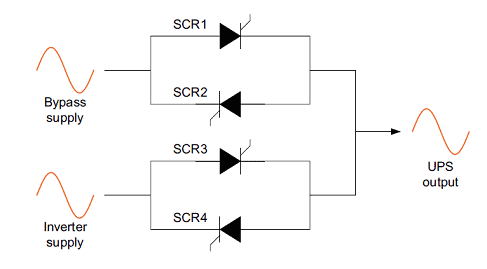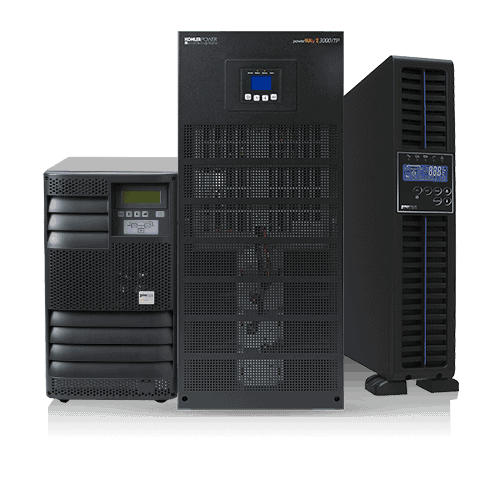To a data centre or IT facility manager, a UPS purchase represents an investment in both power continuity and power quality. An on-line, dual-conversion topology offers the best UPS solution, as it ensures that the critical load enjoys closely regulated power protection throughout all normal operation.
However, there are circumstances under which even the best of UPS systems are unable to provide full on-line power protection. The utility mains supplying the UPS input could fail for a period beyond the UPS’s battery autonomy. Alternatively, an output overload exceeding the UPS system’s capacity could be caused by a fault in the critical load. Also, even though modern modular UPSs can achieve as much as 99.9999% availability, the chance of a UPS failure does still exist.
Under any of these circumstances, a static switch is used to transfer the load between the UPS inverter output and a bypass supply, which could be the raw utility mains or an alternative supply source. No-break power continuity depends on the static switch’s ability to provide a very fast, make-before-break transfer between the inverter output and bypass.
The static switch is so-called as it typically uses semiconductor silicon controlled rectifiers (SCRs) rather than mechanical switching elements. These are usually arranged as a pair of inverse parallel connected devices in series with the bypass and inverter supplies, as shown in Fig. 1. This shows a single-phase circuit; in a three-phase circuit and a pair of SCRs would be connected in series with each of the phases.
Fig 1. Simplified static switch
The static switch is an intelligent device that decides whether to use the UPS inverter output or the raw mains to supply the load. The decision is made by logic within the switch and/or the UPS’s control system, which continuously monitors the bypass (raw mains) and inverter voltages. The UPS system also controls the phase and frequency of its inverter to ensure that the bypass and inverter supplies are synchronised with one another. Although the UK’s utility mains supplies are generally very stable in frequency, this may not be the case if a standby generator is providing the power supply.
In any case, this synchronisation is essential to allow ‘no-break’ bi-directional transfer between the two supplies. Once an SCR is triggered, it continues to conduct until the voltage across it is zero – or passes through zero in an AC waveform. This is used to achieve the ‘no-break’ transfer, as in the event of a fault SCRs 1 and 2 are triggered while SCRs 3 and 4 are still conducting. Therefore, the inverter and bypass outputs are paralleled momentarily during the changeover. This is why the two power supplies must be synchronised before transfer either way can take place; failure to ensure synchronisation would almost certainly subject the load to a power disturbance.
The UPS manufacturer’s specifications should provide details of the UPS system’s synchronisation limits.
An online system can also use the static switch to transfer the load to bypass if an overload condition drawing excessive current develops. In some UPS installations, the transfer is delayed for a finite time to allow a load protection fuse or circuit breaker to act and clear the fault – so avoiding subjecting the load to raw mains or even complete loss of power.
An internal or external maintenance bypass is another type of static switch, used to disconnect the UPS system and isolate it for service or repair while transferring the load directly to a bypass supply. External types are desirable, as they isolate the UPS completely.
Overall, static switches are essential for ensuring no-break transfers between inverter and bypass, and for ensuring personnel safety during in-line UPS maintenance and repairs.
Contact us to organise a Site Survey for your business by calling us on 0800 731 3269 or email [email protected].





